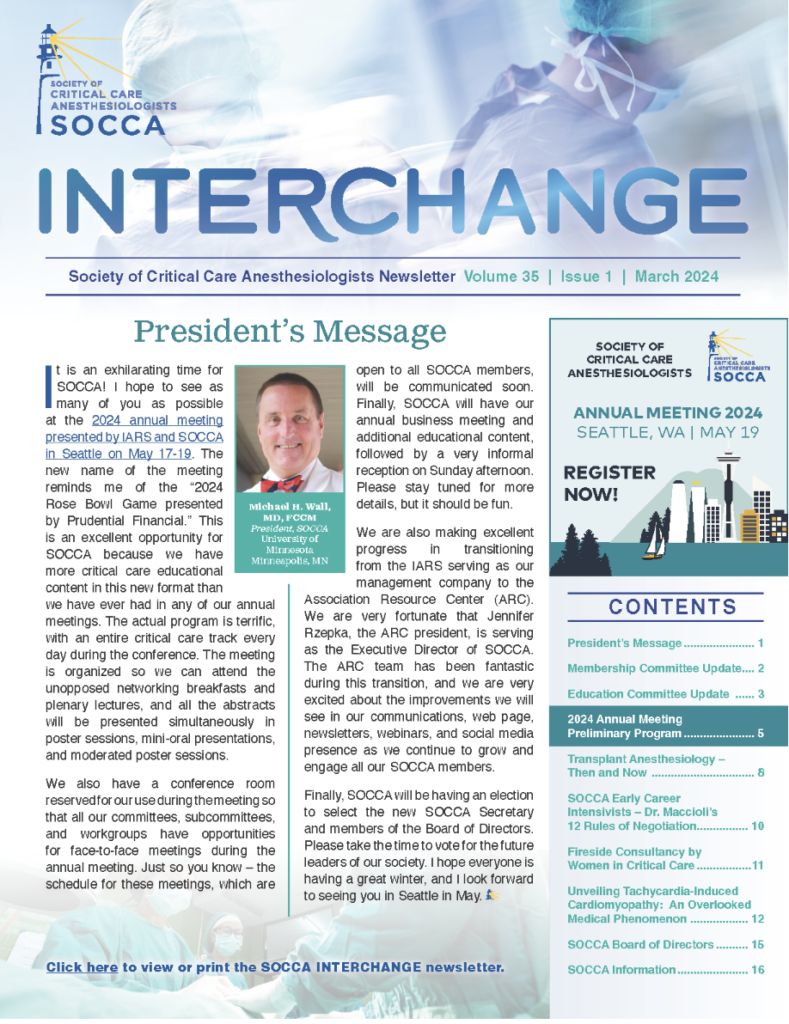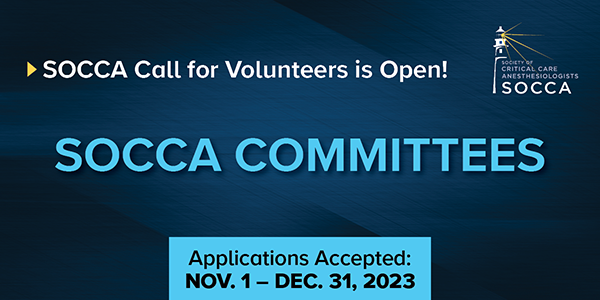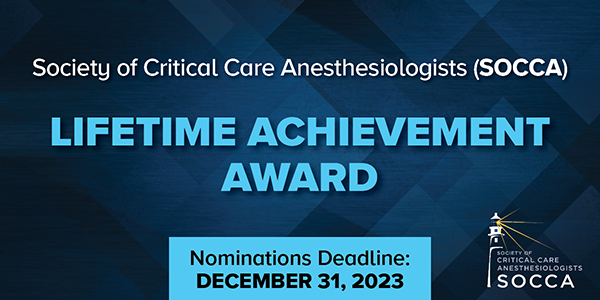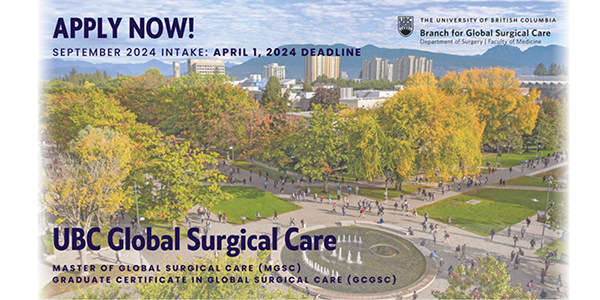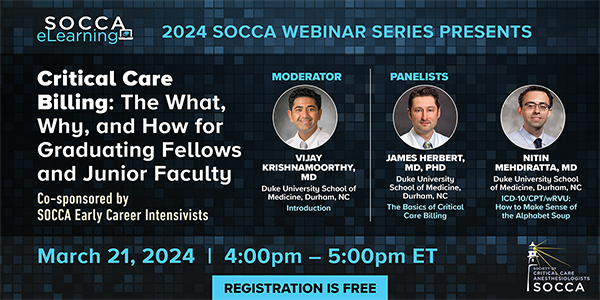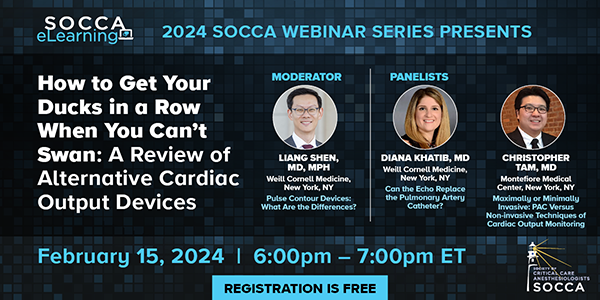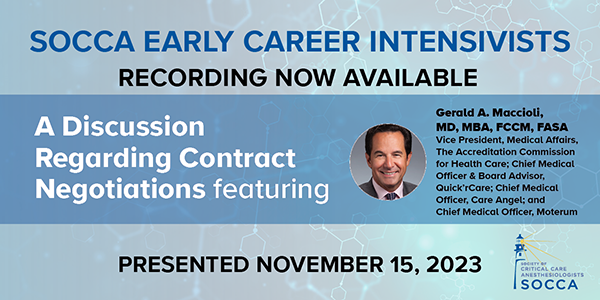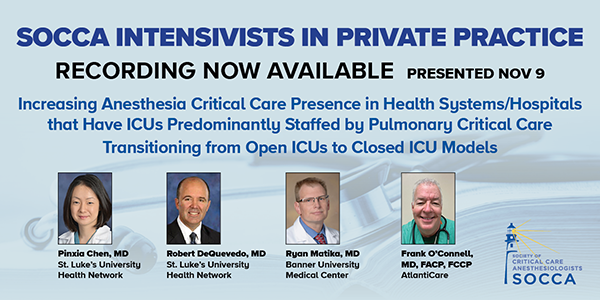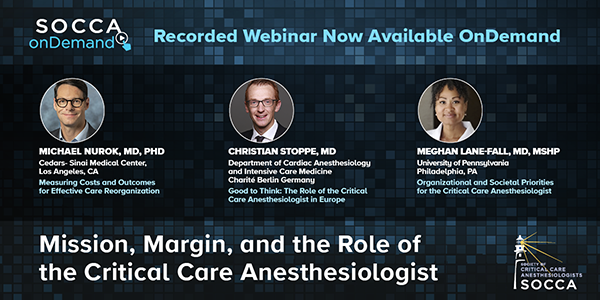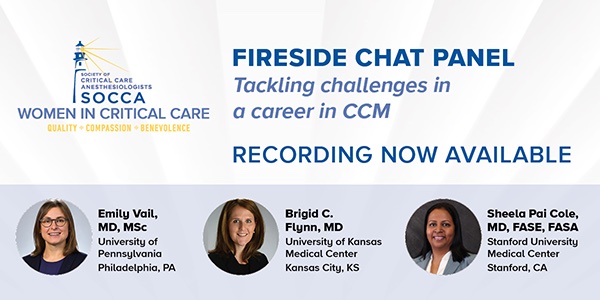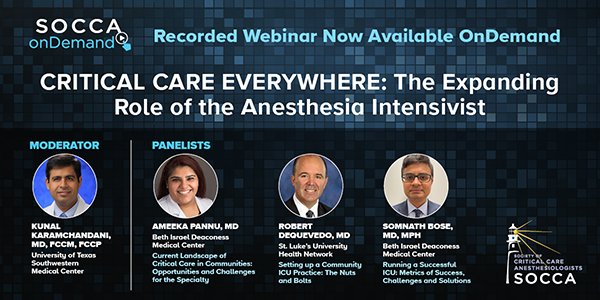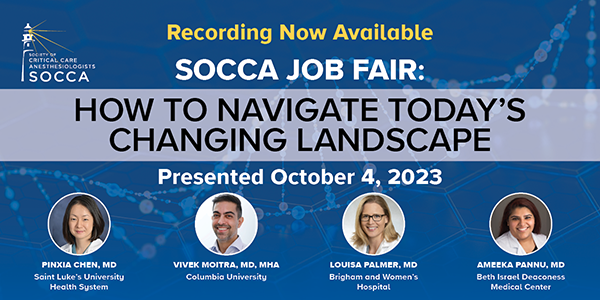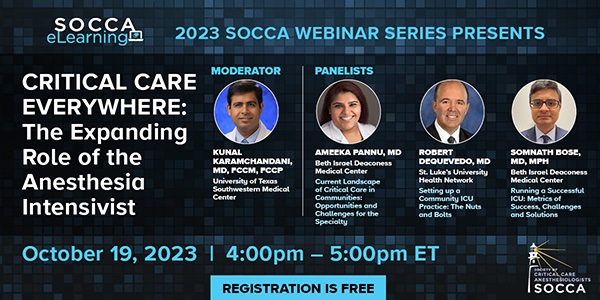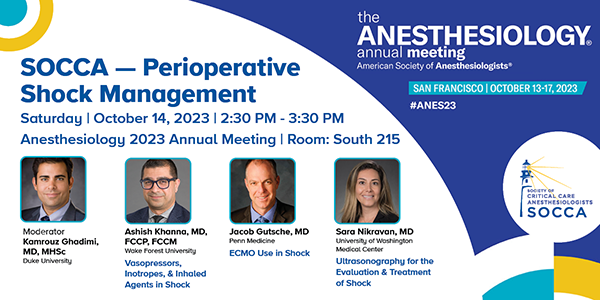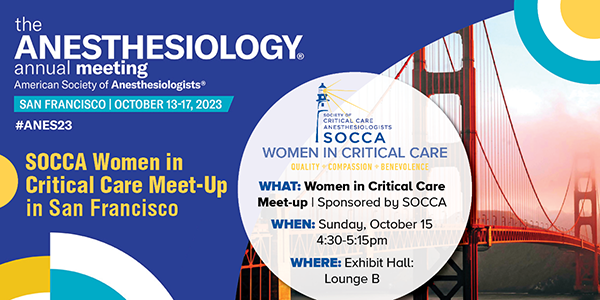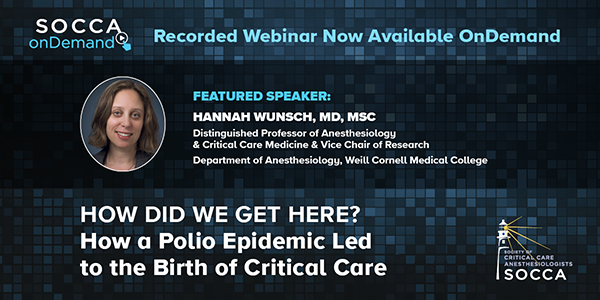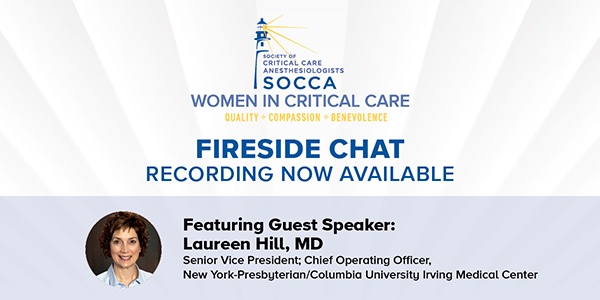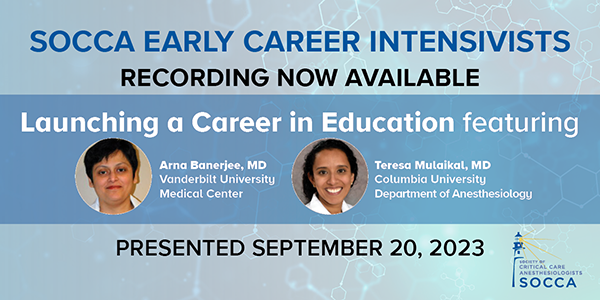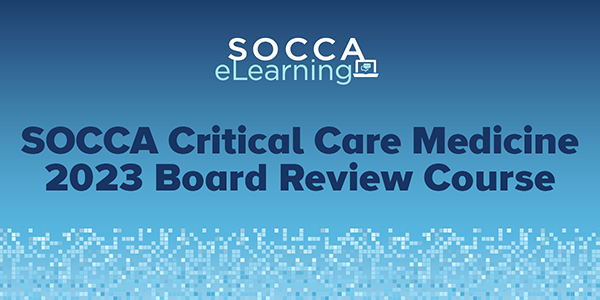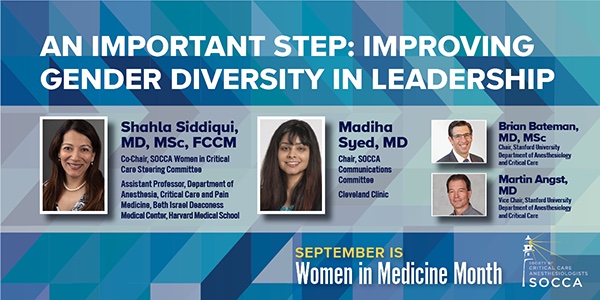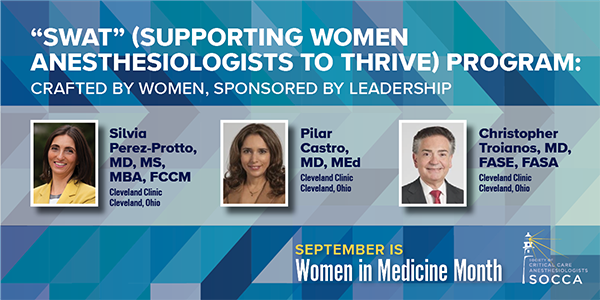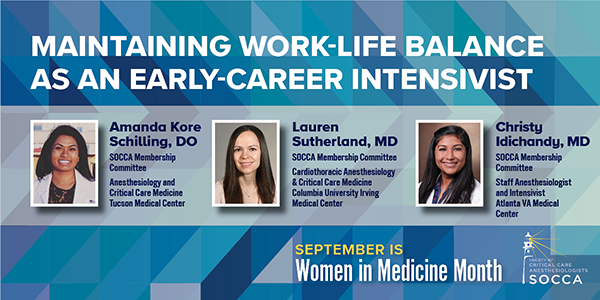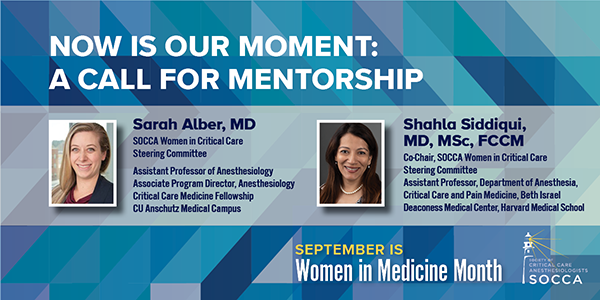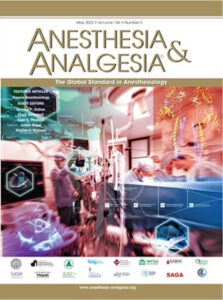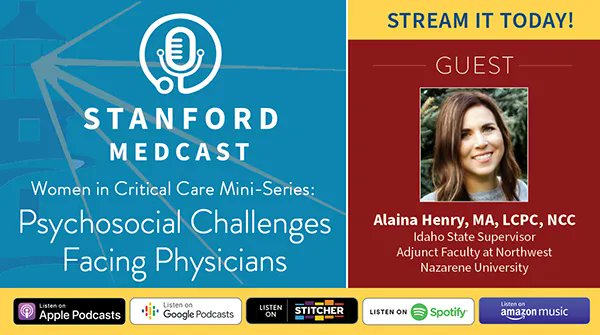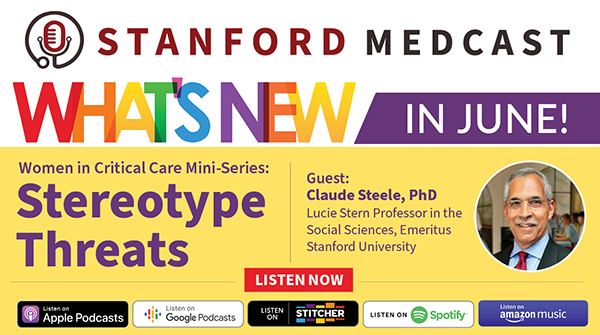by Allison Dalton, MD and Kunal Karamchandani, MD, FCCM
As we approach the new year, we look forward to providing educational content to all of our SOCCA members and to the critical care community at large. The annual meeting subcommittee has been busy compiling a fantastic program with an outstanding group of speakers for what will hopefully be our first in person annual meeting in many years. We strive to ensure a meeting that will highlight the recent advances in critical care medicine and are also working with the research committee to bring the latest in cutting edge research to the meeting attendees.
Continue Reading…
by Craig S. Jabaley, MD, Anne Drewry, MD, and Sheida Tabaie, MD
As a professional organization dedicated to the support and development of anesthesiologists who care for critically ill patients, SOCCA’s aims include fostering community and advocacy. SOCCA has therefore organized and promoted efforts to better understand the national anesthesiology critical care practice landscape. Two such efforts—respective surveys of the SOCCA and American Society of Anesthesiologists membership—have yielded valuable insights [1, 2]. However, our conceptualization of the national landscape remains incomplete. Organizational membership surveys, by definition, reach only members of those organizations and reflect only the responses of those who choose to participate, which serves to introduce bias. For example, compensation as self-reported in such surveys will be naturally weighted to reflect the prevailing standards at the institutions with the most respondents, and those standards themselves will be highly influenced by local or regional market forces and institutional culture.
Continue Reading…
by Lovkesh Arora, MD and Lauren Sutherland, MD
Despite evolution in many areas of critical care medicine, refractory cardiopulmonary failure continues to have high morbidity and mortality. In patients with severe cardiopulmonary failure refractory to medical therapy, mechanical circulatory support (MCS) is more commonly being utilized for both short and long-term support. MCS for circulatory shock includes intraaortic balloon pump (IABP), minimally invasive percutaneous ventricular assist devices (pVADs, e.g., Impella), external and durable LVADs, and venoarterial extracorporeal membrane oxygenation (ECMO); venovenous ECMO is utilized for isolated pulmonary failure. MCS can salvage patients with severe disease to allow time for recovery, facilitate corrective procedures, or bridge to transplantation. The evolution of these therapies underscores the constantly evolving nature of critical care medicine and the importance of innovation in improving patient outcomes.
Continue Reading…
by Shahla Siddiqui, MD, MSc, FCCM
We hope you are well and have seen the new uploads on our Women in Critical Care website (SOCCA) and our column in the SOCCA Interchange. We are adding more content and intend to bring new Webinars, Fireside Chats, and—hopefully—some more creative content designed for the busy woman in CCM.
Continue Reading…
by Vinodkumar Singh, MD, Ayesha Bryant, MD, MSPH, Meghana Muppuri, MBBS, and Arnav Muppuri
Artificial intelligence (AI) is a revolutionary inclusion to current medical practice, particularly in the field of Critical Care medicine. The actualization of AI is empowered with the intellectual acumen to analyze and generate vastly complex data, as well as integrate from experience, based on recognition of formed patterns. This is achieved through machine learning and perception, compounded by natural language processing, and automated simple repetitive tasks or exposure. These are attributes or skills born from the innovative integration of human intelligence and computer systems. Thus, allowing for a multitude of decision-making and task-executing functions. Critical Care widely encompasses an intricate and detail-oriented multidisciplinary approach in diagnosing diseases and analyzing their progression with simultaneous treatment interventions. While the established conventional approach to medical management has proven to be undoubtedly reliable, it is also unremarkably challenging and time-consuming to medical professionals in the face of disease progression and overwhelming workload. The field of Critical Care establishes multiple landscapes and opportunities in which AI is a transformative asset to researchers and Critical Care physicians alike.
Continue Reading…
by Anoop Chhina, MD, William Peruzzi, MD, and John Reveille, MD
Ankylosing Spondylitis (AS) is an inflammatory rheumatic disease that primarily affects the spine, although other joints and organs can become involved. AS and its parent disease, Axial Spondyloarthritis, are not rare, and affect at least 2 million and 5.9 million adults in the United States alone, respectively (1,2,3).
Continue Reading…
by Alessandro De Camilli, MD
To augment recruitment to our specialty, we need to start at the grassroots. The COVID-19 pandemic shed light on a lack of critical care training among practicing anesthesiologists, as well as lack of appreciation for the specialty in the global medical community. A large contributing factor is the myopic perspective of our specialty offered on the standard boilerplate anesthesiology rotation. Medical student exposure to anesthesiology is almost exclusively dedicated to intubation and the role of the intraoperative provider: a rote sequence of injections and dials, staying quiet so as not to wake the beast across the drapes. We love to show off our cheap thrills: the magic of propofol, the placement of arterial lines, and we stick to cheeky truisms: “physiology and pharmacology in action,” “our patients are 100% compliant!”, “we protect patients from the surgeon!” But in doing so, we are selling ourselves short. It’s time to draw back the curtain and show them how much the role of a modern-day anesthesiologist and intensivist can transcend this role.
Continue Reading…
